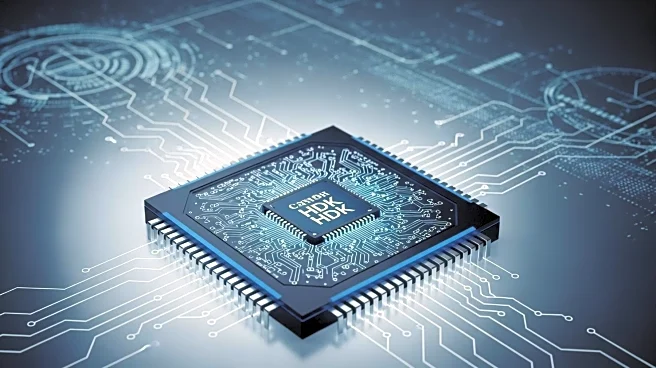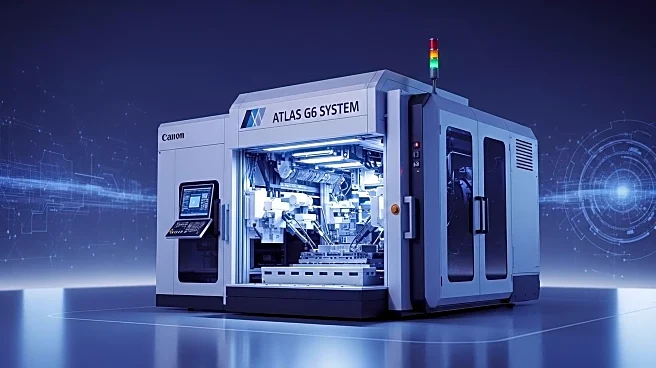What's Happening?
Researchers at Johns Hopkins University have made a significant breakthrough in microchip technology, discovering new materials and processes that could lead to the production of smaller and faster microchips. The team, led by Michael Tsapatsis, has developed a method to create circuits that are invisible to the naked eye using a precise and economical manufacturing process. This advancement involves the use of metal-organic resists that can accommodate high-powered radiation processes, allowing for the creation of microchip details smaller than the current standard of 10 nanometers. The research, published in Nature Chemical Engineering, marks a step forward in the quest for more efficient microchip production.
Why It's Important?
This development is crucial for the electronics industry, which continuously seeks to enhance the performance and reduce the size of microchips used in a wide range of devices, from smartphones to automobiles. The ability to produce smaller microchips could lead to more powerful and energy-efficient electronic devices, potentially transforming consumer electronics, telecommunications, and computing industries. The new process could also lower production costs, making advanced technology more accessible. As the demand for smaller and more efficient devices grows, this breakthrough positions Johns Hopkins at the forefront of microchip innovation.
What's Next?
The researchers are experimenting with different combinations of metals and organic materials to optimize the process for manufacturing. They anticipate that the new methodology, known as chemical liquid deposition, will be adopted in manufacturing within the next decade. This could lead to widespread changes in how microchips are produced, with potential implications for global technology markets. The ongoing research will likely attract interest from major tech companies looking to integrate these advancements into their production lines.











